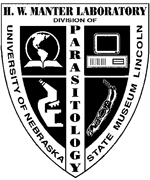Parasitology, Harold W. Manter Laboratory of

Harold W. Manter Laboratory of Parasitology: Library Materials
Document Type
Article
Date of this Version
2022
Citation
MDPI Life 12(9): 1442
Brice Rotureau, editor
Special issue: Untangling Host-Symbiont Coevolutionary History in the High Throughput Sequencing (HTS) Era)
doi: 10.3390/life12091442
Check for updates: https://www.mdpi.com/article/10.3390/life12091442?type=check_update&version=1
Abstract
Next-generation sequencing technologies are revolutionizing the fields of genomics, phylogenetics, and population genetics. These new genomic approaches have been extensively applied to a major group of parasites, the lice (Insecta: Phthiraptera) of birds and mammals. Two louse genomes have been assembled and annotated to date, and these have opened up new resources for the study of louse biology. Whole genome sequencing has been used to assemble large phylogenomic datasets for lice, incorporating sequences of thousands of genes. These datasets have provided highly supported trees at all taxonomic levels, ranging from relationships among the major groups of lice to those among closely related species. Such approaches have also been applied at the population scale in lice, revealing patterns of population subdivision and inbreeding. Finally, whole genome sequence datasets can also be used for additional study beyond that of the louse nuclear genome, such as in the study of mitochondrial genome fragmentation or endosymbiont function.
Included in
Genomics Commons, Parasitic Diseases Commons, Parasitology Commons


Comments
Copyright 2022, the author. Open access material
License: CC BY